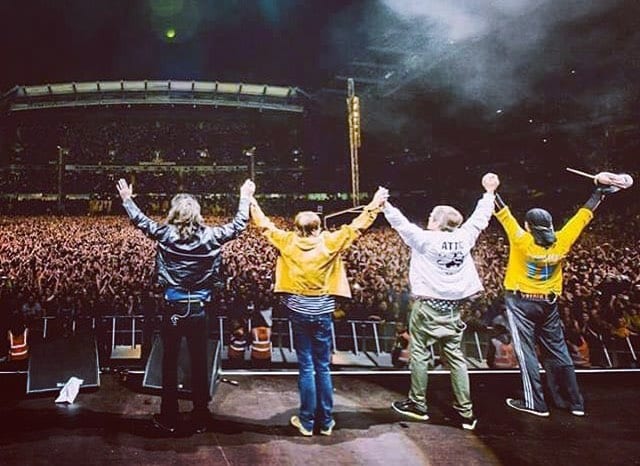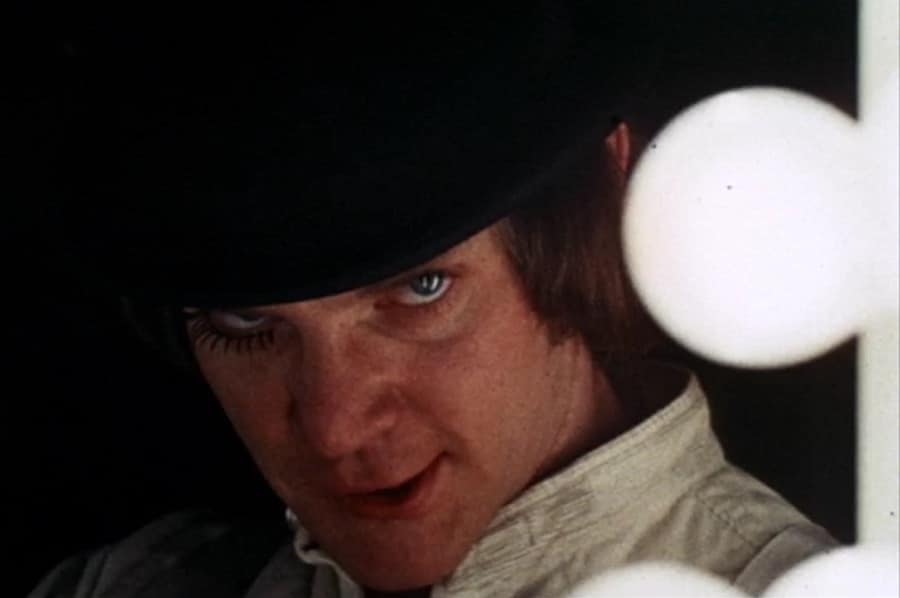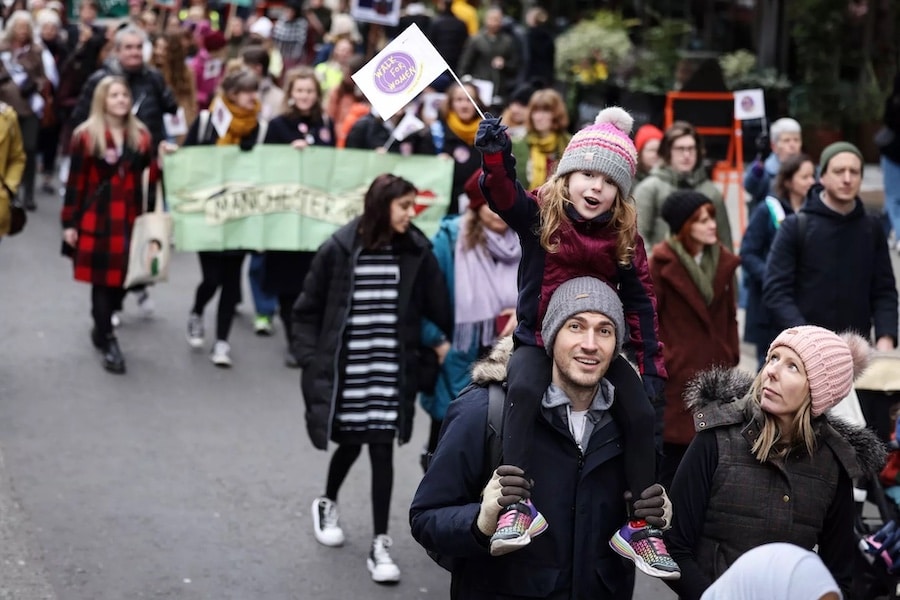Review: Life on Our Planet at The Bridgewater Hall is ‘an extraordinary retrospective on our place on earth’
- Written by Thom Bamford
- Last updated 5 months ago
- City of Manchester, Music, Sponsored
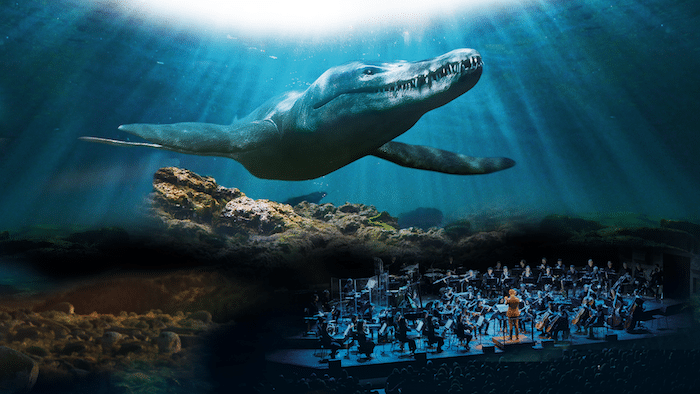
On October 8th, 2024, The Bridgewater Hall in Manchester was transformed into an immersive portal back through the annals of Earth’s history with Netflix’s Life on Our Planet in Concert.
This remarkable experience, created by ESK Film in association with Netflix and Silverback Films, blended film and live music, offering audiences a breathtaking journey through the four-billion-year story of life on Earth.
As an accompaniment to Life on Our Planet, the eight-part Netflix documentary series produced by Steven Spielberg and Alastair Fothergill, the concert utilised a live symphony orchestra to score pivotal moments from the series.
Audiences were presented with dramatic visuals of Earth’s history and the awe-inspiring struggle of species to survive through five mass extinction events and the potential sixth we’re facing today.
Scored by Lorne Balfe, the series brings long-lost creatures back to life, showcasing the resilience and beauty of life with unparalleled artistry and scientific accuracy.
Life on Our Planet at the Bridgewater Hall
The concert began by taking the audience back to a primordial Earth, 2.4 billion years ago, when the planet’s atmosphere was cloaked in a methane haze.
Here, ethereal music imbued with gentle string melodies and electronic undertones reflected the strange, alien nature of this bygone era.
The orchestra captured the eeriness of an ancient world still devoid of complex life, evoking a sense of stillness that was broken only by the faint stirring of single-celled organisms beginning their slow, monumental march toward complexity.
As the narrative progressed, punctuated by visuals of ancient seas and primordial creatures, the orchestra infused each scene with intensity.
With each evolutionary leap, the score evolves alongside.
The music surged with energy as we moved forward through time to 468 million years ago when life first ventured beyond the ocean.
This moment was heralded by a haunting, medieval brass instrument, the Carnyx of Tintignac, which pierced the air with its eerie, almost alien wail.
This Celtic war horn’s raw and visceral sound perfectly encapsulated the struggle of early vertebrates as they battled their way onto land.
It would be a huge feature of the show and elicited one of the biggest cheers towards the end of the show.
The story of Arthropleura
One of the concert’s highlights was the depiction of 345 million years ago, where the orchestra took on a playful tone as it underscored the peculiar love story of two giant arthropods.
The story of Arthropleura, a massive millipede, was told with a quirky charm that elicited laughter from the audience.
Balfe’s score captured both the creatures’ ungainly movements and the surprising tenderness of their encounter, utilising quirky pizzicato strings and warm brass undertones.
This emotional portrayal of ancient creatures gave them a humanity that resonated with the audience, despite their bizarre appearance.
The journey continued through lush prehistoric swamps, where woodwinds created a lush, verdant soundscape as Tiktaalik roseae—the “fishapod”—made its historic crawl onto land.
A ponderous, almost hesitant melody accompanied the creature’s hesitant movements as if it were questioning whether to leave the safety of the water.
The orchestra’s precision here was astonishing, perfectly mirroring the tentative steps of a species on the brink of monumental change.
As Tiktaalik encountered its predator, a monstrous early reptile, the music swelled into a dramatic crescendo, capturing the intensity of the evolutionary struggle.
Mastery of Epochs and Extinctions
The concert continued through various epochs, deftly marking the arrival of amphibians and reptiles.
As enormous, majestic reptiles filled the screen, the orchestra’s brass section erupted in a triumphant fanfare, celebrating these rulers of Earth.
With thundering horns and booming percussion, the orchestra bought the animal’s subtleties to life.
When the performance reached the Permian mass extinction event, the music took on a darker tone.
Timpani boomed ominously, while strings created a dissonant, chaotic soundscape that mirrored the destruction wrought by volcanic eruptions and climatic upheaval.
The hall filled with hard tension as the brass section mimicked the sounds of explosions and devastation.
The scene was both haunting and tragic, a testament to the fragility of life in the face of nature’s fury.
As the dust settled, the score softened, reflecting the resilience of life that managed to endure even this apocalypse.
In a scene featuring Lystrosaurus, one of the few survivors of the Permian extinction, the orchestra evoked a hopeful tone.
A beautiful woodwind melody rose, symbolizing the persistence of life amidst chaos and destruction.
This delicate touch brought a sense of solace to the audience, reinforcing the idea that life, in one form or another, will always find a way to continue.
The Dinosaurs
As the concert reached the era of the dinosaurs, the orchestra erupted with a storming brass fanfare, capturing the sheer power and dominance of these colossal creatures.
The music surged with energy, with triumphant horns and booming percussion embodying the grandeur of the dinosaurs as masters of their epoch.
The brass section thundered through the hall, resonating with a fierce, almost primal intensity that brought the majesty of these ancient giants to life.
Each note seemed to underscore the dinosaurs’ supremacy, as they roamed the land unchallenged for over 165 million years, their dominance as unstoppable as the music that celebrated them.
Humanity’s place in nature
As the dinosaurs fell, mammals began their rise, accompanied by stirring glockenspiel arpeggios and warm, triumphant chords.
The concert took on a more introspective tone as the visuals shifted to modern-day cities and manufacturing processes.
The haunting sounds of Philip Glass-inspired trills and arpeggios underscored scenes of environmental degradation and pollution.
As the orchestra swelled with intensity, the imagery of plastic pollution, urban sprawl, and deforestation painted a sobering picture of humanity’s impact on the planet.
The concert concluded with an existential reflection on the human species’ role in Earth’s story.
In a final, poignant moment, the orchestra quieted to a single, reflective melody, as the screen displayed images of our cities, our industries, and our pollution.
The score gently questioned whether humanity deserves its place in this grand tale of survival, hinting at the possibility of our own downfall.
For all our accomplishments, we are but a chapter in Earth’s vast history, and the concert left the audience contemplating the legacy we will leave behind.
Final thoughts
Life on Our Planet in Concert was a masterful blend of music, film, and narrative that brought the story of Earth’s history to vivid life.
The event was both a celebration of nature’s beauty and a sombre meditation on our place within it.
The orchestra’s precision and Balfe’s emotive score amplified each evolutionary leap, each extinction event, and each triumph of life, leaving the audience entranced.
As the audience filed out of The Bridgewater Hall, it was clear that this experience had left a lasting impact.
With humanity’s future uncertain, the concert served as a powerful reminder of our responsibility to cherish and protect the natural world that gave rise to us.
In a time when our actions threaten the very fabric of life on Earth, Life on Our Planet in Concert was a call to action for its future.
Tickets for Life on Our Planet
It was an unforgettable, soul-stirring reminder that, though we are a small part of Earth’s vast history, we have a profound impact on its future.
You can get tickets to see Life on Our Planet for their UK tour by clicking here
- This article was last updated 5 months ago.
- It was first published on 9 October 2024 and is subject to be updated from time to time. Please refresh or return to see the latest version.
Did we miss something? Let us know: [email protected]
Want to be the first to receive all the latest news stories, what’s on and events from the heart of Manchester? Sign up here.
Manchester is a successful city, but many people suffer. I Love Manchester helps raise awareness and funds to help improve the lives and prospects of people across Greater Manchester – and we can’t do it without your help. So please support us with what you can so we can continue to spread the love. Thank you in advance!
An email you’ll love. Subscribe to our newsletter to get the latest news stories delivered direct to your inbox.
Got a story worth sharing?
What’s the story? We are all ears when it comes to positive news and inspiring stories. You can send story ideas to [email protected]
While we can’t guarantee to publish everything, we will always consider any enquiry or idea that promotes:
- Independent new openings
- Human interest
- Not-for-profit organisations
- Community Interest Companies (CiCs) and projects
- Charities and charitable initiatives
- Affordability and offers saving people over 20%
For anything else, don’t hesitate to get in touch with us about advertorials (from £350+VAT) and advertising opportunities: [email protected]

LOWRY’s Quays Theatre gets a plush new look thanks to award
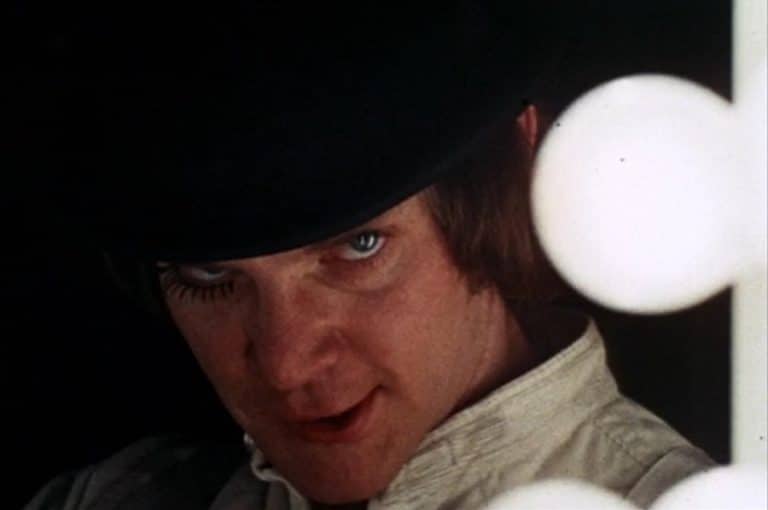
What is the legacy of Manchester’s most controversial (and maybe best) novel?

Big Issue, bigger heart: Manchester comes together for Colin

